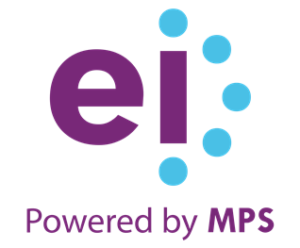What Is Learning Fatigue?
It’s very common to see organizations skimp on or go overboard with employee training and development needs in certain months of the year. With remote work now becoming the norm rather than the exception, it has given rise to a new phenomenon called online learning fatigue.
L&D teams and HR professionals are trying to enforce so many training, reskilling, and upskilling requirements on their workers that it’s resulting in virtual learning fatigue.
Too much of a good thing can be bad!
What Causes Learning Fatigue In Remote Employee Training Programs?
In today’s remote working environment, learning overload and fatigue is the result of a confluence of factors, including the following:
Pressure From Corporate To Upskill/Reskill
It’s a highly competitive world, and businesses are constantly reinventing themselves to stay ahead. As a result, they’re continually retooling workforces to stay competitive, which then pressurizes employees into a continuous reskill and upskill loop, causing learning fatigue.
The Overwhelmed Remote Employee
Contrary to the misconceptions out there, most remote workers find it challenging to “unplug” or build a work-life balance in the new WFH paradigm. As a result, they end up taking more responsibilities and working more hours than they would during “regular times.” Making time to take on mandated training overwhelms them further.
Remote Working Fatigue
Working remotely, without regular in-office support networks, has its handicaps, which adds stress to the remote employees’ day. When management pushes already stressed employees to undertake additional remote employee training, it can produce fatigue points for the workforce.
Inability To Immediately Apply New Learning
The fact that most training is geared toward preparing workers for situations they may/may not face in an uncertain future only adds to virtual learning fatigue. Employees feel exhausted when they give their all to master a subject/course without knowing exactly when they’ll be able to apply what they’ve learned.
Focus On Compliance Over Substance
A lot of compliance-based training is piled onto overworked and overwhelmed remote workers—merely for the sake of ticking off checklists. The race to complete mandated course loads within stipulated deadlines adds to remote employee training fatigue.
Extended Training Time
Traditional corporate eLearning doesn’t align with the exhaustive WFH workday demands that today’s remote workforce faces. Often, remote employees attending eLearnings don’t have the traditional backfill “manning their desk.” The lengthy curriculums and prolonged completion timelines place additional stress on workers who must attend training and complete assigned (often extra) remote workloads simultaneously.
How Do You Overcome Learning Fatigue In Remote Employee Training?
The following learning design practices are key to creating learner engagement and keeping learning fatigue at bay. Here are 3 learning design strategies to help you address learning overload:
Strategy 1: Access And Flexibility
- Enable pull-based learning
Instead of enforcing training, offer remote employees the option to explore what’s available and allow them to choose what aligns with their learning needs and work-life schedules. - Balanced blended learning
Instead of favoring one specific mode of training, pre-recorded sessions, live-streamed, or vide-chat-based training, use a moderate blend of synchronous and asynchronous (also called poly-synchronous) training to add flexibility to your remote employee training program. - Learning in the flow of work (LIFOW)
Learning needs often arise during an employee’s normal workflow, at which time the remote learner scrambles to find learning content to address the specific work demand. Giving virtual learners access to app-based learning and short-format content, such as micro-videos or FAQ-type learning, can address this aspect of online learning fatigue. - On-demand learning
An understandable cause for learning fatigue is when employees must wait for learning to provide the answers they need instead of being able to access learning when they need it. Offering on-demand learning alleviates that issue. - Regular short breaks
Structure your learning with appropriate short breaks to provide respite from virtual learning fatigue. - Provide big-picture learning
Remote workers often feel stressed and fatigued when they struggle to understand the appropriate context of their learning. Instead of diving right into specifics, providing learning background and context can lessen the stress of learning new/additional concepts and ideas.
Strategy 2: Social And Collaborative Learning
- Informal learning to drive learning and working together
Adding informal learning, such as chat groups, discussion forums, and learning networks to your arsenal of online learning tools can help relieve virtual learning fatigue. Although remote workers are more at ease in such informal settings, they’ll continue stress-free learning from interactions with their peers. - Learner-moderated interactions
Learning under instructor-moderated models can sometimes feel overwhelming and lead to fatigue among learners. When engaging small- to moderate-sized learner groups, it helps nominate a few (2 or 3) learners to also act as moderators. The learning group will more readily feel at ease in this model of collective learning. - Encourage break-out sessions
In larger groups, learning fatigue may easily creep in as sessions stretch indefinitely due to extended amounts of learner-instructor interactions (even 10 minutes with each of the 20 learners can stretch the session to 3.5 hours!) required. Using breakout rooms/sessions (3 rooms with 5 to 7 learners) allows for less stressful and more expedient sharing and collaboration. - Use curated content
In addition to digitizing existing training content, add targeted and curated new content [1], including infographics, videos, and relevant internal content, and a select range of external resources. The use of user-generated content (UGC) is also a great way to address remote employee training fatigue.
Strategy 3: Designing Better Learning Programs
- Immersive learning for driving engagement
A more immersed and engaged learner is a less stressed or fatigued learner. That’s because immersive learning strategies, such as branching scenarios, gamification, and next-gen strategies such as virtual reality (VR) and augmented reality (AR) relieve online learning fatigue rather than exacerbate it. - Experiential learning
Using techniques such as interactive stories, role-playing, real-life scenarios, and workplace-relevant use cases can help leverage learning based on prior experiences [2]. This offers more relevant learning for remote workers and produces less fatigue among learners. - Personalization
The more rigid a learning environment is, the more challenging it can become for the learner to engage with. Introducing personalized learning paths and learner-driven environment customizations makes learning less exhausting to consume. - Microlearning
Consuming extended learning content, such as long-form videos or hour-long presentations, adds to learning fatigue and burnout. Introducing shorter-form, targeted learning in the form of micro-modules addresses that issue.
Parting Thoughts
Today, trainers and L&D teams are eagerly pushing a multitude of training options on remote employees. This creates learning overload, which overwhelms already stressed employees. As they grapple with the many remote employee training requirements thrust upon them, they reach an end-point where learning fatigue kicks in. Beyond this is the point where the law of diminishing marginal training returns sets in; fatigued learners can no longer engage or absorb more training, regardless of how hard you may try!
I hope this article will help you apply the recommended strategies and approaches and successfully overcome online learning fatigue in your remote employee training.
Meanwhile, if you have any specific queries, do contact me or leave a comment below.
References:
[1] 10 Content Curation Strategies for Corporate Training
[2] 8 Strategies to Integrate Experiential Learning in Workplace Training Programs
Read More:
- eBook: How to Engage Your Learners in the Remote Workplace Through Immersive Learning Strategies
- How to Multiply the Impact of Videos in Training by Leveraging a Learning and Performance Ecosystem
- How to Leverage Social Learning to Support Remote Learning Programs
- Training the Modern Learner – Delivery Strategies and Content Formats that Work
- How to Use Gamification to Promote Active Learning in the Changed Workplace Dynamics










